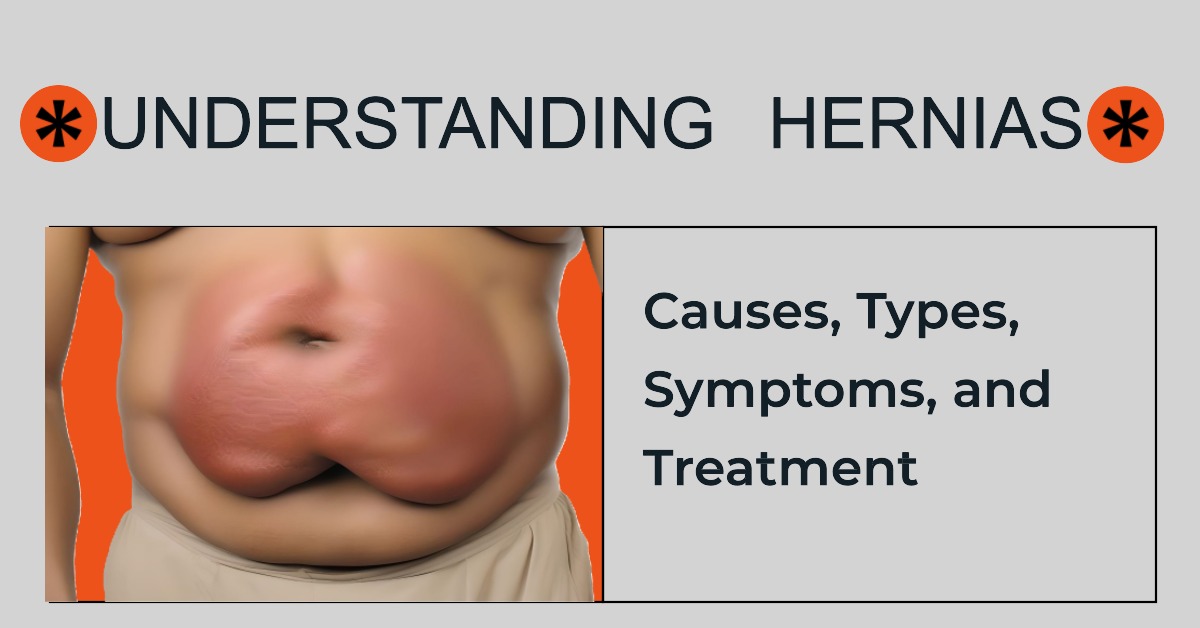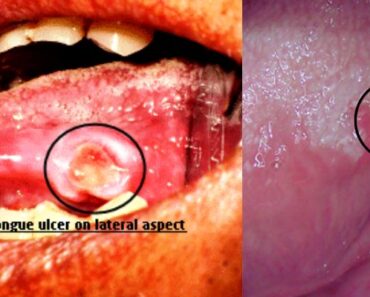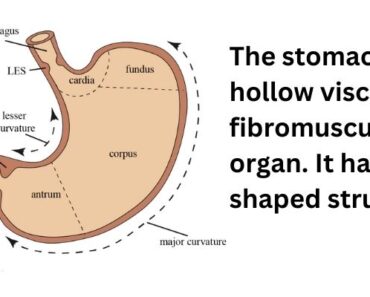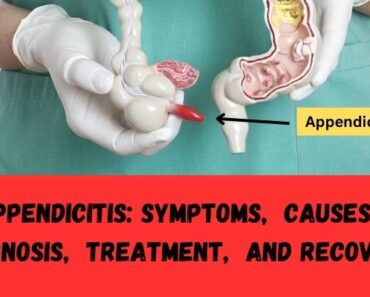What is a Hernia?
It occurs when an internal organ or tissue bulges through a weak spot or opening in the muscle or tissue that normally holds it in place. Most commonly, hernias involve abdominal organs pushing through the abdominal wall. It can develop gradually over time due to aging and wear and tear on muscles. They can also be caused by injury, surgery, or congenital conditions. Essentially, a that is characterized by the protrusion of an organ or tissue through an abnormal opening.
Additionally, These are categorized into different types based on their location and the organs involved. Some common types include inguinal hernias (occurring in the groin), umbilical hernias (around the belly button), and incisional hernias (resulting from surgical incisions). Each type may require specific treatment approaches tailored to the individual’s condition and medical history.
Definition – A bulging of an organ or tissue through an abnormal opening
Types of hernia
There are several types of hernias, each classified based on their location and the area of the body affected. Here are some common types:
- Inguinal hernia
- Femoral hernia
- Umbilical / Ventral hernia
- Incisional hernia
- Hital hernia
- Epigastric Hernia
- Spigelian Hernia
- Congenital diaphragmatic hernia
- Inguinal Hernia
This is the most common type of hernia It is also known as groin hernia. and occurs when tissue, such as part of the intestine, protrudes through a weak spot in the abdominal muscles in the groin area. Most common in men. - Femoral Hernia
Most common in females. Less common than inguinal hernias, femoral hernias occur when tissue protrudes into the canal that carries the femoral artery from the abdomen to the leg. They typically appear as a bulge near the groin or upper thigh. - Umbilical / Ventral Hernia
This type of hernia occurs when tissue protrudes through the abdominal wall near the belly button (umbilicus). It is common in newborns and infants but can also occur in adults, especially those who are overweight or pregnant. - Incisional Hernia
This develops at the site of a previous surgical incision where the tissue pushes through abdominal muscles that have weakened or separated. It can occur months or even years after surgery. - Hiatal Hernia
A hiatal hernia occurs when the upper part of the stomach bulges through the diaphragm into the chest cavity. This can lead to acid reflux and other symptoms. - Epigastric Hernia
This type of hernia occurs when fat pushes through the abdominal wall between the navel and the lower part of the sternum (breastbone). - Spigelian Hernia
This is a rare type of hernia that occurs through a defect in the abdominal wall, usually next to the rectus abdominis muscle. - Congenital diaphragmatic hernia
Present at birth (Birth defect). In which the diaphragm doesn’t close during fetal development. It can cause protrusion of abdominal organs in the thoracic cavity while the organs are still growing.
Signs & Symptoms of hernia
The signs and symptoms of a hernia can vary depending on the type and location of the hernia, but common symptoms include:
- Visible bulge: One of the most noticeable signs of a hernia is a bulge or lump in the affected area. This bulge may be more prominent when standing up, coughing, or straining.
- Pain or discomfort: You may experience pain or aching at the site of the bulge, especially when lifting heavy objects, coughing, or bending over. The pain can range from mild to severe.
- Weakness or pressure: Some people describe feeling a sense of weakness or pressure in the abdomen or groin area where the hernia is located.
- Burning or aching sensation: You might feel a burning or aching sensation at the site of the hernia, particularly after prolonged standing or physical activity.
- Swelling: There may be swelling around the hernia, accompanied by tenderness or redness.
- Digestive symptoms: In cases where a hernia affects the digestive tract (such as hiatal hernias or inguinal hernias), symptoms may include acid reflux, difficulty swallowing, or constipation.
It’s important to note that not all hernias cause symptoms. Some hernias are discovered incidentally during a physical examination or imaging test.
Causes of the Hernia
Hernias can develop due to a combination of factors that weaken or create an opening in the muscle or connective tissue that normally holds an organ or tissue in place. Here are some common causes and risk factors for hernias:
- Weakness in the abdominal wall: This is the primary cause of most hernias. The muscles of the abdominal wall can weaken due to aging, injury, or strain, allowing organs or tissues to push through.
- Congenital factors: Some people are born with a congenital weakness in the abdominal wall, making them more prone to developing hernias.
- Heavy lifting: Lifting heavy objects improperly or repeatedly can strain the abdominal muscles and increase the risk of hernia formation.
- Persistent coughing or sneezing: Chronic coughing or sneezing due to smoking, asthma, or chronic obstructive pulmonary disease (COPD) can strain the abdominal muscles and contribute to hernia development.
- Pregnancy: Pregnancy can weaken the abdominal muscles and create additional strain, especially in the groin area, leading to inguinal or femoral hernias.
- Obesity: Being overweight or obese puts extra pressure on the abdominal muscles and can increase the likelihood of hernias.
- Straining during bowel movements or urination: Constipation, difficulty urinating, or straining due to prostate problems can strain the abdominal muscles and contribute to hernia formation, particularly in the groin (inguinal hernias).
- Previous abdominal surgery: Surgical incisions weaken the abdominal wall, making hernias more likely to develop at or near the surgical site (incisional hernias).
- Smoking: Smoking can weaken connective tissue and impair healing, potentially increasing the risk of hernia development.
- Family history: There may be a genetic predisposition to hernias, where certain families have a higher incidence of hernias due to inherited traits in connective tissue strength.
It’s important to note that while these factors can contribute to hernia formation, some hernias may develop without any obvious cause or due to a combination of factors. Maintaining a healthy weight, avoiding heavy lifting without proper technique, and addressing chronic coughing or constipation can help reduce the risk of hernias.
Download as a PDF (What is a Hernia?)
Diagnosis of hernia
- Medical history
- Physical examination
- Ultrasound
- CT (Computed Tomography)
- MRI (Magnetic Resonance Imaging)
- Endoscopy (For hiatal hernias)
Management and treatment of hernia
Lifestyle Changes: Certain lifestyle modifications can help manage hernias and reduce symptoms. These include:
- Avoiding heavy lifting
- Maintaining a healthy weight
- Managing chronic cough
- Addressing constipation
Supportive care – monitoring of any changes and improvements.
Hernia Trusses or Belts: In some cases, especially for inguinal hernias, your doctor may recommend a hernia truss or belt to provide temporary support and relieve symptoms.
Wait-And-Watch Approach / Watchful Waiting: If a small or mild hernia only comes out occasionally then the healthcare provider may take a wait-and-watch approach to see if it gets much worse when providers recommend repairing them through surgical procedure repair of the hernia (Herniorrhaphy).
Herniorrhaphy / Open Hernia Repair – Hernia repair surgery is common and generally a minor procedure unless there are complications. The surgeon will push the herniated tissue back into place and reinforce the barrier it went through with stitches or surgical mesh. Surgeons can often use minimally invasive methods for routine hernia repair, which means smaller incisions, less postoperative pain, and a faster recovery.
Laparoscopic Hernia repair- (uses a laparoscope) a long, thin tube with a lighted camera to look inside the surgical site. The laparoscope goes in one small hole and long, thin surgical tools go through another.
Robotic surgery for hernia repair is similar, but the surgeon controls the tools from a computer console, using robotic arms. Some hernias may need traditional open surgery.
The choice of surgical approach depends on factors such as the type and location of the hernia, the surgeon’s expertise, and the patient’s overall health. Surgery is generally recommended for younger patients and those with larger hernias, that cause significant symptoms.
Read More-








